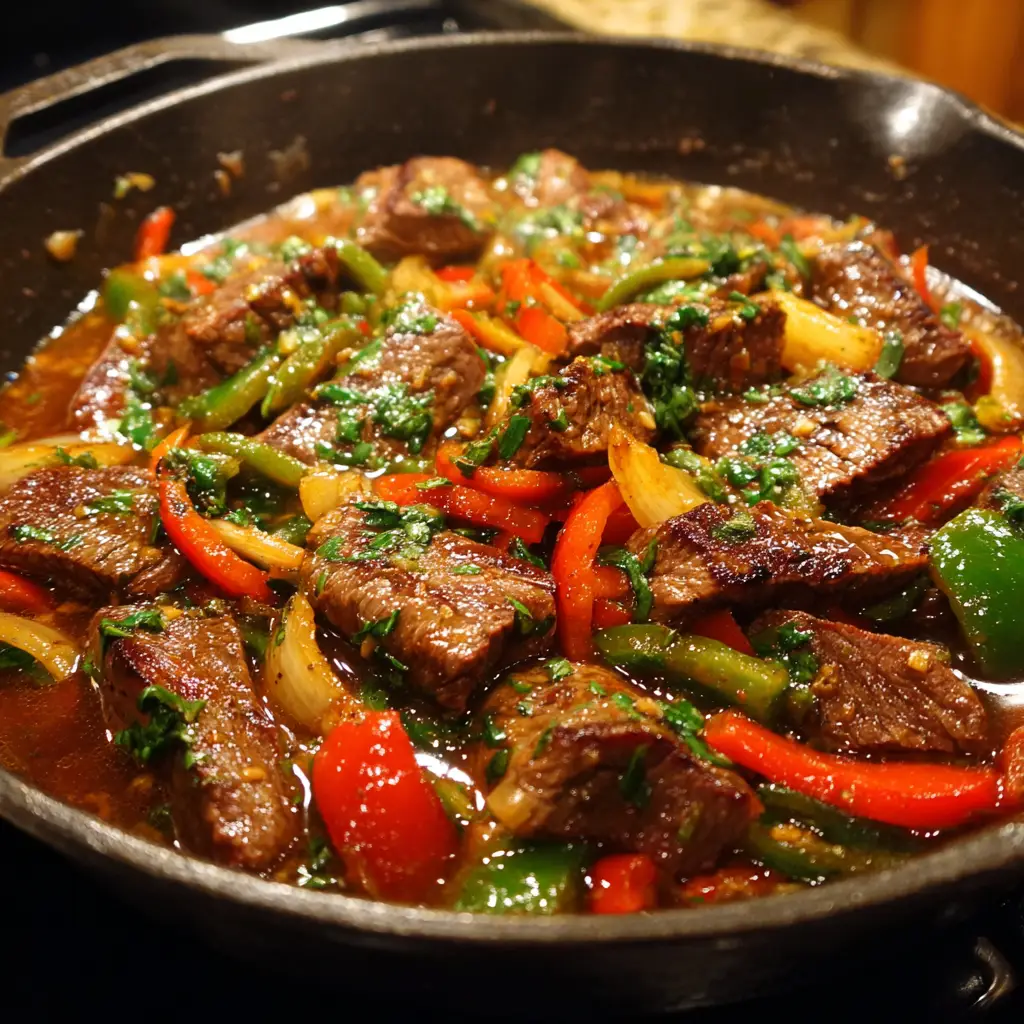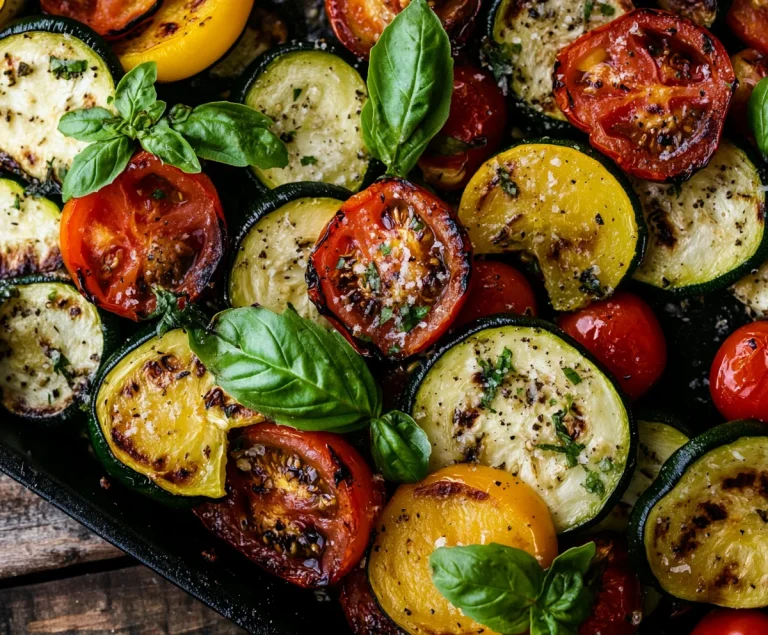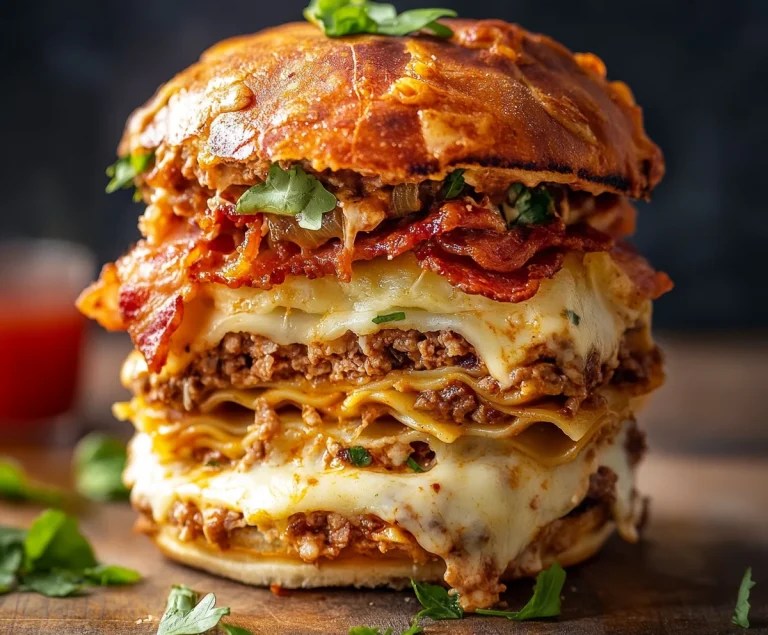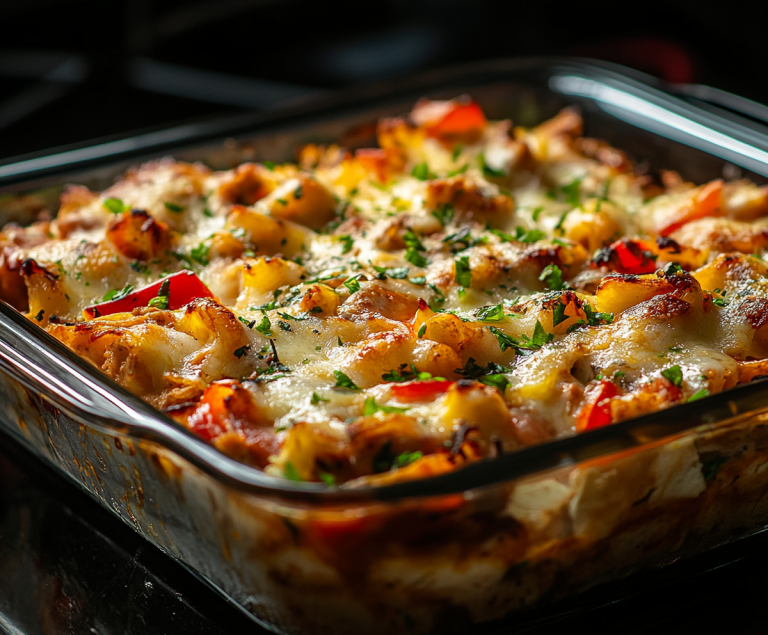Introduction
A comforting meal that never fails to impress, pepper steak brings together tender strips of beef, colorful bell peppers, and a savory sauce that’s hard to resist. Originating from Chinese-American cuisine, this dish has made its way into kitchens across the globe. Its simplicity, bold flavors, and quick cooking time make it a popular choice for both weeknight dinners and special occasions.
What sets pepper steak apart is the way it balances rich umami notes with a gentle heat from black pepper and the sweetness of bell peppers. While some versions lean toward a spicy kick, others go for a mellow, soy-forward flavor. No matter which variation you prefer, the essentials remain the same—quality beef, fresh vegetables, and a well-seasoned sauce.
Pepper steak also offers versatility. Whether you want to keep it low-carb by serving it over cauliflower rice or go traditional with steamed white rice, the options are endless. It’s a one-pan dish that is as satisfying as it is easy to prepare, and even beginner cooks can master it without feeling overwhelmed.
Let’s dive into the ingredients and steps you’ll need to recreate this restaurant-worthy dish right at home.
Ingredients Needed
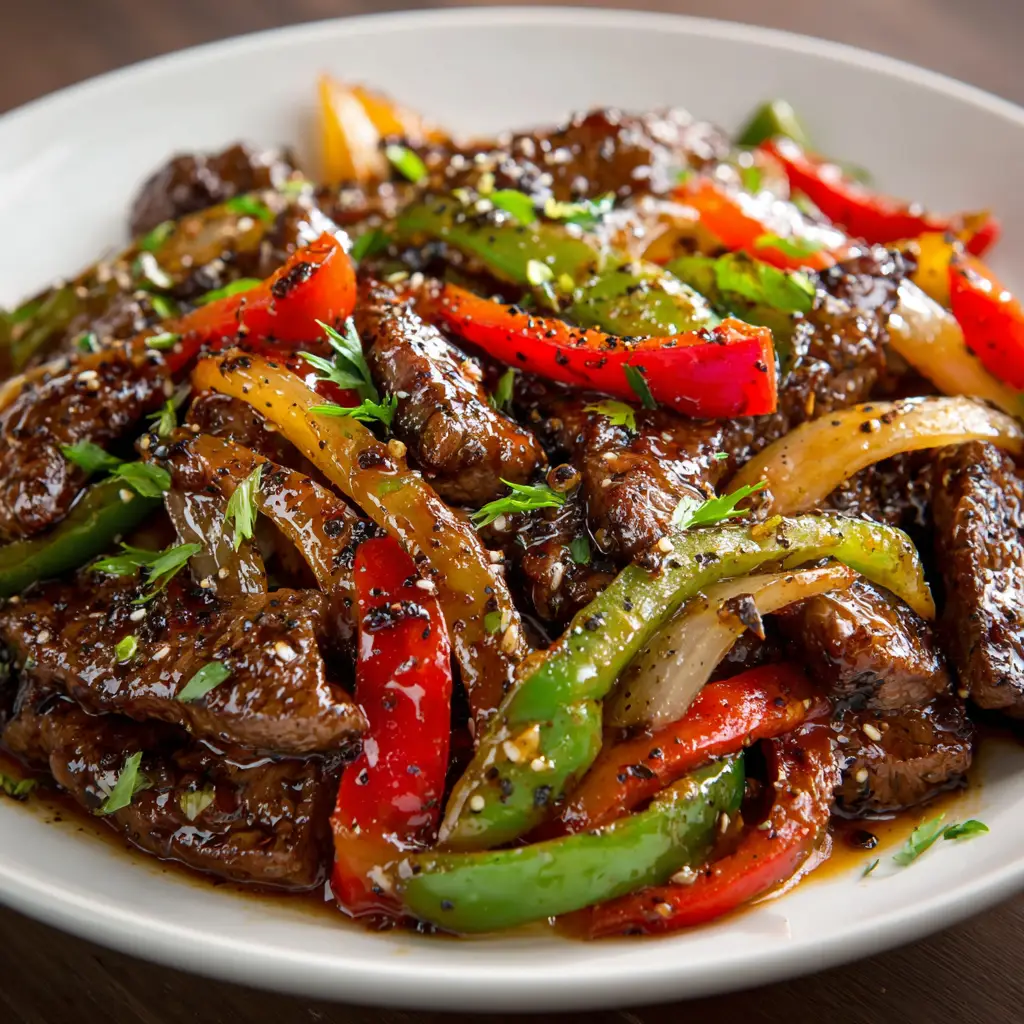
To make an authentic pepper steak recipe, having the right ingredients matters. Below is a breakdown of everything you need along with the estimated calorie content per serving. This helps you stay informed about your nutritional intake while still enjoying a hearty meal.
Ingredients Table
| Ingredient | Quantity | Calories |
|---|---|---|
| Flank steak (sliced thin) | 1 pound | 680 |
| Bell peppers (red and green, sliced) | 2 medium | 50 |
| Onion (sliced) | 1 medium | 45 |
| Garlic (minced) | 2 cloves | 10 |
| Soy sauce (low sodium) | 1/4 cup | 35 |
| Cornstarch | 1 tablespoon | 30 |
| Water | 1/4 cup | 0 |
| Ground black pepper | 1 teaspoon | 6 |
| Vegetable oil | 2 tablespoons | 240 |
| Sesame oil (optional) | 1 teaspoon | 40 |
| Sugar (optional) | 1 teaspoon | 16 |
Total estimated calories per serving (serves 4): Approximately 280 to 320 depending on optional ingredients
Read More: Cheeseburger Tater Tot Casserole
Step-by-Step Cooking Instructions
Start by preparing all the ingredients. Slice the flank steak into thin strips, cutting against the grain for maximum tenderness. Set the meat aside and get your vegetables chopped and ready.
1. Marinate the steak
In a bowl, combine the sliced steak with half the soy sauce, half the black pepper, and cornstarch. Mix well to coat each strip evenly. Let this marinate for at least 15 minutes while you prepare the vegetables.
2. Stir-fry the vegetables
Heat one tablespoon of vegetable oil in a large skillet or wok over medium-high heat. Add the sliced onions and bell peppers. Stir-fry for 3 to 4 minutes until they become slightly tender but still retain some crunch. Remove from the pan and set aside.
3. Cook the steak
Add the remaining tablespoon of oil to the pan. Once hot, add the marinated beef. Spread it out in a single layer for even cooking. Let it sear undisturbed for a minute before flipping. Stir-fry for another 2 to 3 minutes until the meat is browned and cooked through.
4. Add sauce and finish the dish
In a small bowl, mix the remaining soy sauce, water, garlic, sugar if using, and sesame oil. Pour this mixture over the cooked beef. Add the vegetables back into the pan. Toss everything together and cook for another 2 minutes to blend the flavors.
Taste and adjust seasoning if needed. A pinch of extra black pepper or a splash of soy sauce can make a noticeable difference.
Read More: Chicken Bacon Ranch Tater Tot Casserole
Tips for Customizing the Recipe
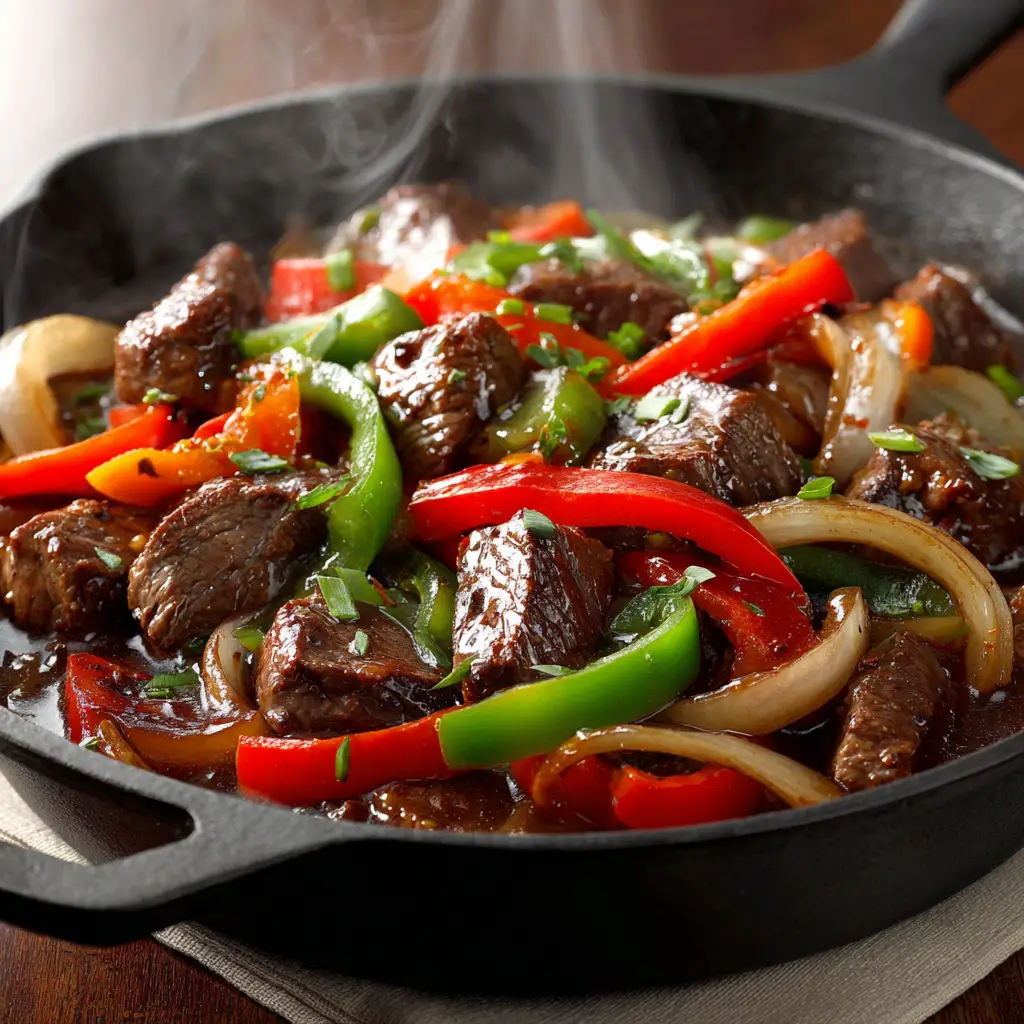
One of the best things about pepper steak is how easy it is to adapt to your preferences. Here are some tips for making it your own:
Choose your cut wisely
Flank steak works well, but sirloin, ribeye, or even skirt steak are great alternatives. Just be sure to slice the meat thinly across the grain.
Add more vegetables
Mushrooms, snap peas, or baby corn can add extra texture and flavor. These blend well with the core ingredients and boost the nutritional value.
Adjust the spice level
For those who enjoy a bit more heat, try adding crushed red pepper flakes or a small amount of chili garlic sauce. This can elevate the dish without overpowering the main flavors.
Swap the soy sauce
If you’re watching sodium, go for coconut aminos or tamari as a substitute. They offer similar umami flavor with less salt.
Make it gluten-free
Use gluten-free soy sauce or tamari and double-check your cornstarch to make sure it’s safe for gluten-sensitive diets.
Nutritional Information
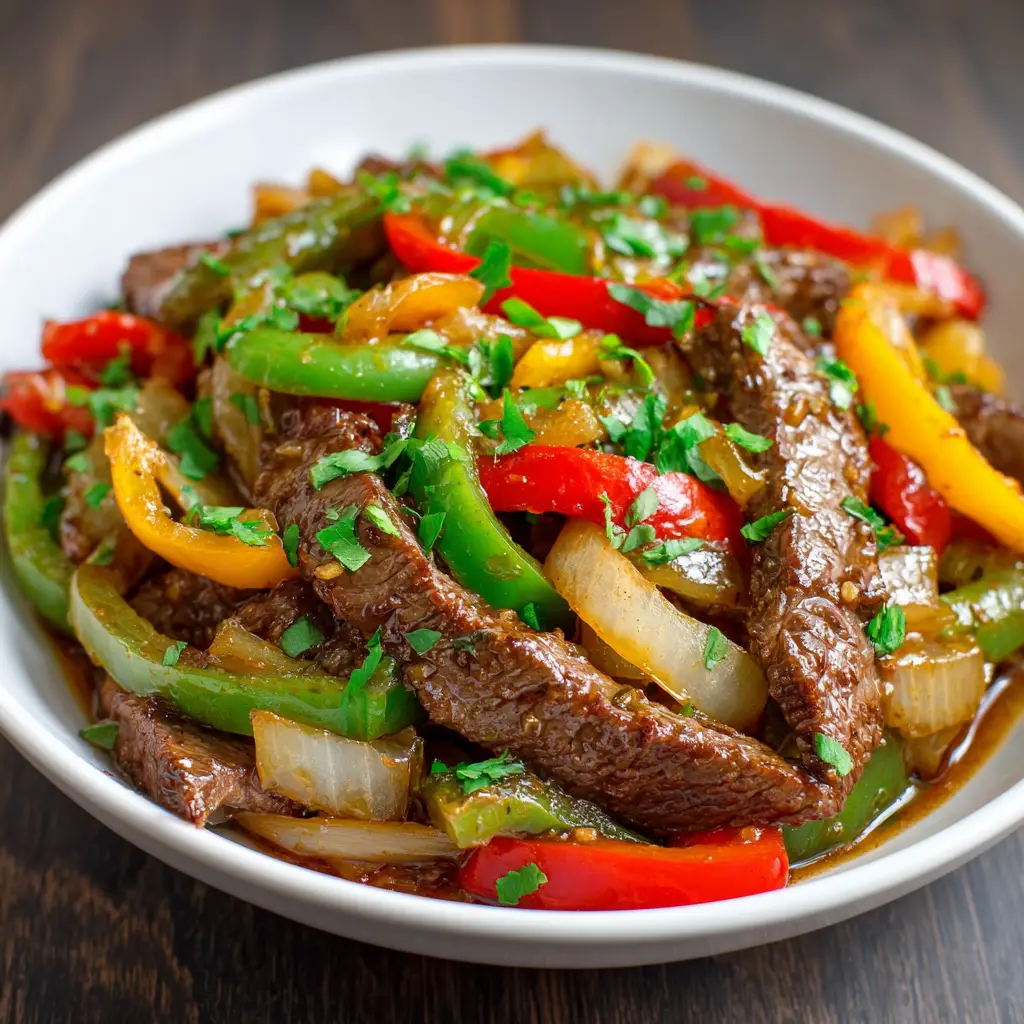
Knowing the nutritional value of your meal is helpful for managing dietary goals. Based on the standard ingredients listed above and dividing the recipe into four servings, here is the approximate nutritional breakdown per serving:
| Nutrient | Amount per Serving |
|---|---|
| Calories | 300 |
| Protein | 25 grams |
| Fat | 18 grams |
| Carbohydrates | 12 grams |
| Fiber | 2 grams |
| Sugars | 3 grams |
| Sodium | 680 mg |
These numbers can vary depending on portion sizes and any substitutions made. Reducing the oil or skipping sugar will bring the calorie count down further.
Serving Suggestions
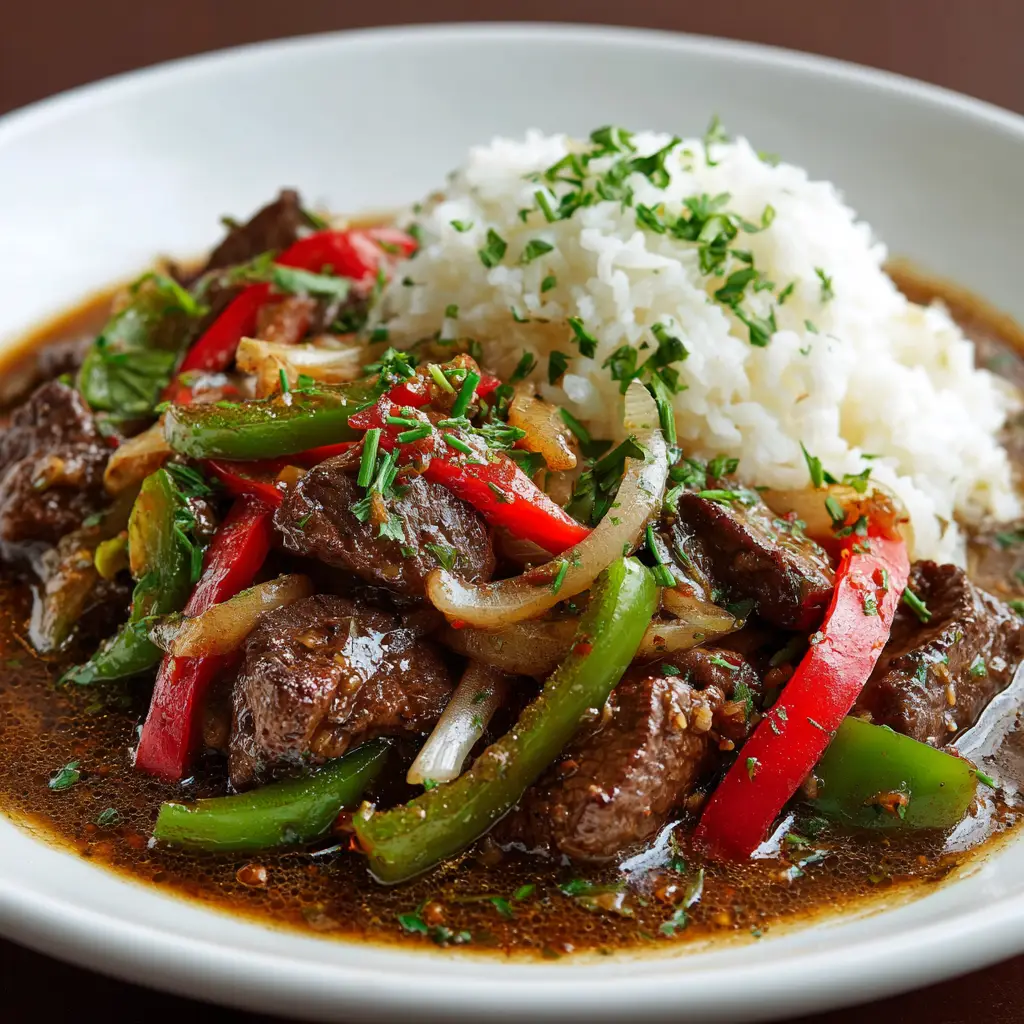
Pepper steak pairs beautifully with a variety of sides. Here are a few ideas to round out your meal:
Steamed jasmine rice
The mild flavor and soft texture of jasmine rice complement the rich sauce and tender beef perfectly.
Brown rice or quinoa
For a more fiber-rich option, brown rice or quinoa adds a nutty taste and additional nutrients.
Cauliflower rice
A low-carb alternative that soaks up the sauce well without overpowering the dish.
Simple stir-fried greens
Bok choy, broccoli, or Chinese spinach can be stir-fried with a bit of garlic and oil for a healthy side.
Egg rolls or dumplings
If you’re in the mood for a more elaborate spread, these make for a satisfying addition to your pepper steak dinner.
Read More: Tater Tot Casserole With Ground Beef
Conclusion
Pepper steak is more than just a quick stir-fry. It’s a flavorful dish that brings warmth, comfort, and a bit of flair to the dinner table. Whether you’re cooking for your family on a weeknight or preparing something special for guests, it delivers bold taste without much fuss. With a few simple ingredients and a hot pan, you can recreate a restaurant favorite in your own kitchen. And the best part? You can tweak it to suit your palate, dietary needs, or whatever veggies are left in your fridge. Give it a try and make it a new favorite in your recipe rotation.

